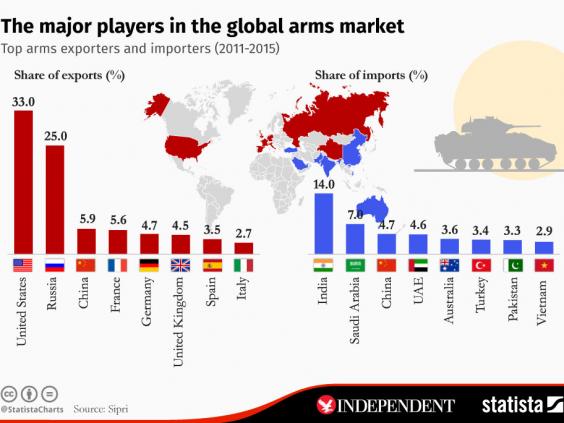The West has a high confidence in its military technology. There are instances of equipment lagging behind state of the art by decades, but at least the vast majority of the public is oblivious to this, and rather enjoys the infotainment of 'Best weapons!' TV shows that preach the 'wonder weapons are ours!' gospel.
At the same time there's a very common excuse for when some development project failed miserably; presumably the project included too many revolutionary, unproven technologies - but "revolutionary" and "leap ahead" buzzwords are still very commonly used when marketing military development projects to the taxpaying public.
Today I'd like to point out one example where we may lag behind by years, and will likely lag behind by well over a decade by the time we caught up. This isn't even an extreme example, for a very similar hardware lagged behind of what's possible by more than two decades. It is an important example, though - for it aims at the very heart of the belief in Western superiority in the air.
Most readers will have heard of AESA radars. These radars use constructive interference of radio waves and slightly phased timing of emissions to steer the direction of the strongest radio signal without needing to physically move an antenna. This allows more rapid steering and is actually almost as old technology as operational radars as a whole. The emitter technology also allows for very rapid changing of wavelengths and is generally credited with being much more resilient to radar jammers (thus delivering a longer range against targets in a jamming environment) and at the same time being less easily detectable by passive radars.
I won't go into much more detail about AESA; the summary is that AESA radars are considered superior in most applications in warfare.
AESA radars were curiously absent from one category of radars until a few years ago, though; active radar seekers in missiles. The introduction of active radar seekers in mainstream missiles targeting aircraft (other than AIM-54, for example) happened in the early 90's with the famous AMRAAM missile, and the concept has proved successful for many reasons.
But it wasn't us Westerners who made the next step to use an AESA radar in missiles meant to kill aircraft; it was the Japanese who -save for some technology transfers from the U.S. - are developing their own military equipment largely in separation from the (rest of the) West.
They worked on an AESA missile seeker and made it operational by 2010 in the AAM-4B missile.*
This may of may not be the path to the future. The intricacies of radar physics and radar engineering are beyond me. There are two indicators for AESA radars on missiles being considered the way to go for killing aircraft, though:
- The Japanese seem to believe in it
- The British seem to believe in it
- The Russians seem to believe in it
 |
| Russian combined electronic steering & mechanical steering 64 module AESA antenna for K-77M/K-77ME. |
The Japanese approach uses a larger antenna with more modules. The only difference I can tell for certain is that the Russian design will have a superior field of view. AESA antennas without mechanical steering have only about 100-110° field of view. A simpler method of mechanical steering for an AESA antenna is to mount the antenna angled, and then rotate it along the longitudinal axis of the missile (or fighter). This is being used for the new AESA radars for Gripen NG and Typhoon. This approach allows for a larger antenna area (more modules of same size).
The AIM-120D is regarded highly for its mature seeker and its extended range, though somewhat under pressure by the European Meteor missile design on export markets. Both may be well behind the curve compared to the Japanese and Russian seeker technology, though.
The raw range will likely prove important against easy targets such as support aviation (AEW, tankers, large jammer and electronic intelligence aircraft), but seeker technology will likely prove decisive against the most difficult manned aviation targets; the latest fighters. This is an area in which NATO may lag badly, and this may remain an issue till the mid-2020's at least**, judging by the general slowness of development and production. A possible quick fix would be to purchase Japanese AAM-4B, just as buying Taiwanese Hsiung Feng III missiles may be a quick fix to NATO's neglect of modern anti-ship missile development.***
It's not what we think of ourselves in NATO, but we often lag badly behind the state of the art and even systems introduced elsewhere. This began with Sputnik, continued with repeated failure to keep our tank guns capable of penetrating the latest Soviet main battle tank frontal protection during the Cold War, the failure to deploy land-mobile ICBMs in NATO, the R-73 shock of 1990, the failure to deploy an Iskander equivalent in NATO, the failure to deploy a S-400 equivalent (though SAMP/T is looking fine for most purposes), the failure to keep NATO's anti-tank guided missile inventories capable against Soviet/Russian countermeasures (Shtora against our SACLOS-guided missiles, laser warner + smoke effective against laser-guided missiles and missile warner + multispectral smoke effective against imaging infrared guided missiles).
The attempt to always stay at the top technologically would be excessively expensive and we would likely fail anyway; that's the nature of arms races. The failure to keep everything up to date is still worrying because this may create windows of opportunity to a potential aggressor who might decide to attack in a fleeting moment of multiple critical superiorities of his forces.
We should at the very least be ready to use stop-gap measures, even if this means to test and possibly introduce not-invented-here hardware.
S O
defence_and_freedom@gmx.de
edit May 2017: The U.S.Army also believes in phased array antennas for surface-to-air missiles.
edit May 2017: The U.S.Army also believes in phased array antennas for surface-to-air missiles.
*: The AAM-5B shorter range missile counterpart with infrared seeker is among the best of its class or maybe the best.
**: Till there's a possible Meteor with AESA antenna.
***: Save for the Norwegian effort, which used a very different approach. Hsiung Feng III combines supersonic cruise with radar guidance, NSM combines high subsonic speed with imaging infrared guidance.
edit June 2017: The Chinese PL-15 missile with a rumoured range of 200 km is also rumoured to sue an active/passive AESA radar seeker, though this feels wrong to me. The Chinese may have been influenced by the AAM-4 and made a move to catch up, though. Chinese arms and munitions designs are usually not at the technological frontier, so this would be an exception and could possibly lead to a temporary technological advantage over USAF and USN at a hugely important point.
edit 2018:
I had overlooked this story which was published a few months before my blog post:
https://ukdefencejournal.org.uk/details-of-joint-missile-project-with-japan-emerge/
The UK/JPN cooperation to combine Japan's AESA seeker from AAM-4B with Meteor (instead of Meteor's MICA-dericed active radar seeker) was kinda confirmed later in 2017:
https://thediplomat.com/2017/11/uk-japan-push-ahead-with-joint-air-to-air-missile-project/
edit June 2017: The Chinese PL-15 missile with a rumoured range of 200 km is also rumoured to sue an active/passive AESA radar seeker, though this feels wrong to me. The Chinese may have been influenced by the AAM-4 and made a move to catch up, though. Chinese arms and munitions designs are usually not at the technological frontier, so this would be an exception and could possibly lead to a temporary technological advantage over USAF and USN at a hugely important point.
edit 2018:
I had overlooked this story which was published a few months before my blog post:
https://ukdefencejournal.org.uk/details-of-joint-missile-project-with-japan-emerge/
The UK/JPN cooperation to combine Japan's AESA seeker from AAM-4B with Meteor (instead of Meteor's MICA-dericed active radar seeker) was kinda confirmed later in 2017:
https://thediplomat.com/2017/11/uk-japan-push-ahead-with-joint-air-to-air-missile-project/
edit 2024: VL MICA NG RF version has active AESA radar seeker.


















